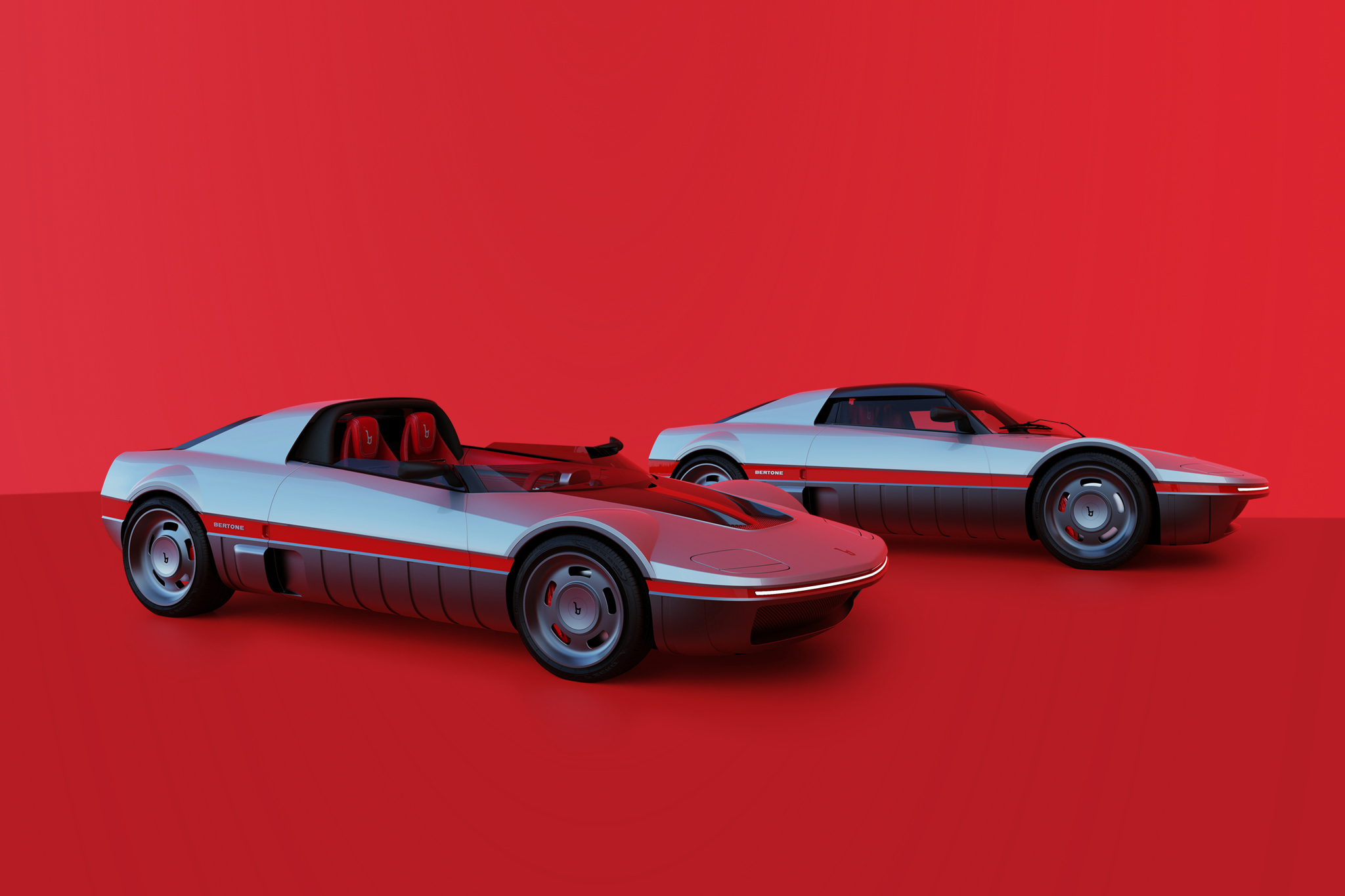Porsche 907
History is irreplaceable. This applies to buildings, historical artefacts and especially to classic cars. That a famous previous owner can have an extreme effect on the value of a car is something many readers know for sure. In Germany and some other countries, for example, an inconspicuous grey Volkswagen Golf IV comes to mind in this context. This car was auctioned in 2005 and fetches € 189,000. The reason was simple: it once belonged to Cardinal Ratzinger, who was working as Pope Benedict in the Vatican at the time. The increase in value of racing cars is even more serious if they have successfully participated in one or more races. Fortunately for potential buyers, this price curve is not exponentially linked to the number of events. Otherwise, Artcurial would probably break all records tomorrow at an auction during the Retromobile in Paris. After all, the Porsche 907 offered there can look back on a remarkable racing history, which we would like to list below.
Remarkable racing history
- 19.05.1968 – 1000 km Nürburgring – Neerpasch/Buzzetta – 4th overall
- 02.02.1969 – 24h Daytona – Soler-Roig/Lins – DNF
- 22.03.1969 – 12h Sebring – Soler-Roig/Lins – 4th overall
- 25.05.1969 – Montseny hillclimb – Soler-Roig – 4th overall, 1st in class
- 01.06.1969 – La Bastida hillclimb – Soler-Roig – 1st overall
- 15.06.1969 – Jarama Prueba 15 de Junio – Soler-Roig – 1st overall
- 26.10.1969 – 6h Jarama – de Bagration/Tramont – DNF
- 01.03.1970 – Jarama Copa Alfil – Wicky – 5th overall
- 30.03.1970 – Nogaro Coupes des Pâques – Rouveyran – 2nd overall
- 12.04.1970 – Test in Le Mans – Rouveyran/Wicky – 6th overall
- 19.04.1970 – Paul Ricard Trophée International – Larrousse – DNF
- 25.04.1970 – 1000 km Monza – Wicky/Cabral – 15th overall, 1st in class
- 24.05.1970 – Montlhéry Grand Prix de Paris – Wicky – 6th overall
- 31.05.1970 – 1000 km Nürburgring – Wicky/Cabral – 9th overall, 1st in class
- 14.06.1970 – 24h Le Mans – Wicky/Hanrioud – DNF
- 15.07.1970 – Hockenheim Südwest-Pokal – Wicky – 6th overall
- 30.08.1970 – Urcy hillclimb – Wicky – result unknown
- 06.09.1970 – 500 km Nürburgring – Wicky – DNF
- 18.10.1970 – 1000 km Montlhéry – Wicky/Rouveyran – DNF
- 08.11.1970 – Casablanca Circuit de la Corniche – Wicky – 2nd overall
- 18.04.1971 – Test in Le Mans – Mattli/Brun/Meier – 11th overall
- 13.06.1971 – 24h Le Mans – Mattli/Brun – 7th overall, 1st in category, 1st in class
- 08.08.1971 – Oberhallau hillclimb – Mattli – 3rd in class
- 15.08.1971 – Hohenlohner Flugplatzrennen Niederstetten – Mattli – 1st in class
- 25.09.1971 – Mosen-Schwarzbach hillclimb – Brun – 1st overall
- 10.10.1971 – Montlhéry Coupes du Salon ‘Garal’ – 5th overall
- 24.10.1971 – Casablanca Circuit de la Corniche – Cohen-Olivar – DNF
- 11.03.1972 – Collonges Sprintrennen – Wicky – 1st overall
- 19.03.1972 – Test in Le Mans – Cohen-Olivar – 12th overall
- 25.04.1972 – 1000 km Monza – Mattli/Bayard – 4th overall, 1st in class
- 30.04.1972 – Monts du Jura hillclimb – Bernard Bugnon – 2nd in class
- 07.05.1972 – Payerne slalom – Wicky – 1st in class
- 14.05.1972 – Montlhéry Coupes de Vitesse – Aeschlimann – 7th overall
- 11.06.1972 – 24h Le Mans – Mattli/Bayard/Brun – 18th overall, 2nd in class
- 18.06.1972 – Sion slalom – Wicky – 2nd in class
- 22.10.1972 – Dijon-Prenois Swiss races – Carron – 1st in class
- 01.04.1973 – Ampus Draguignan hillclimb – de Libran – result unknown
- 22.04.1973 – Dijon-Prenois FRC-Ostermeeting – Degoumois – 3rd in class


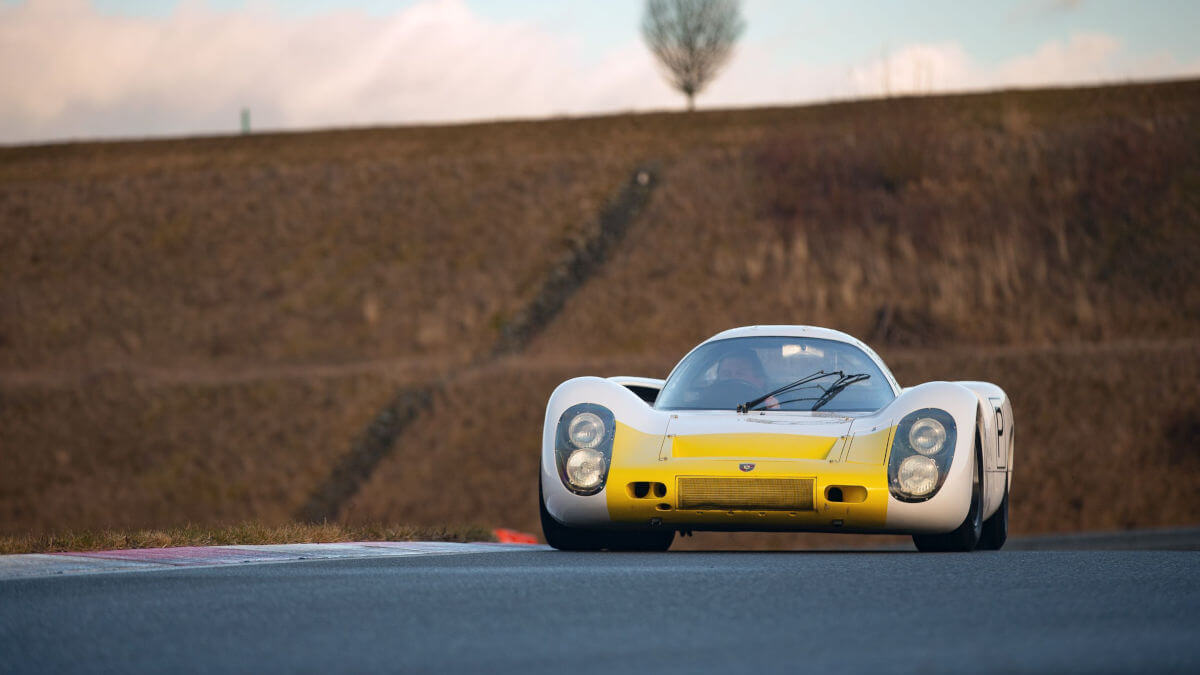

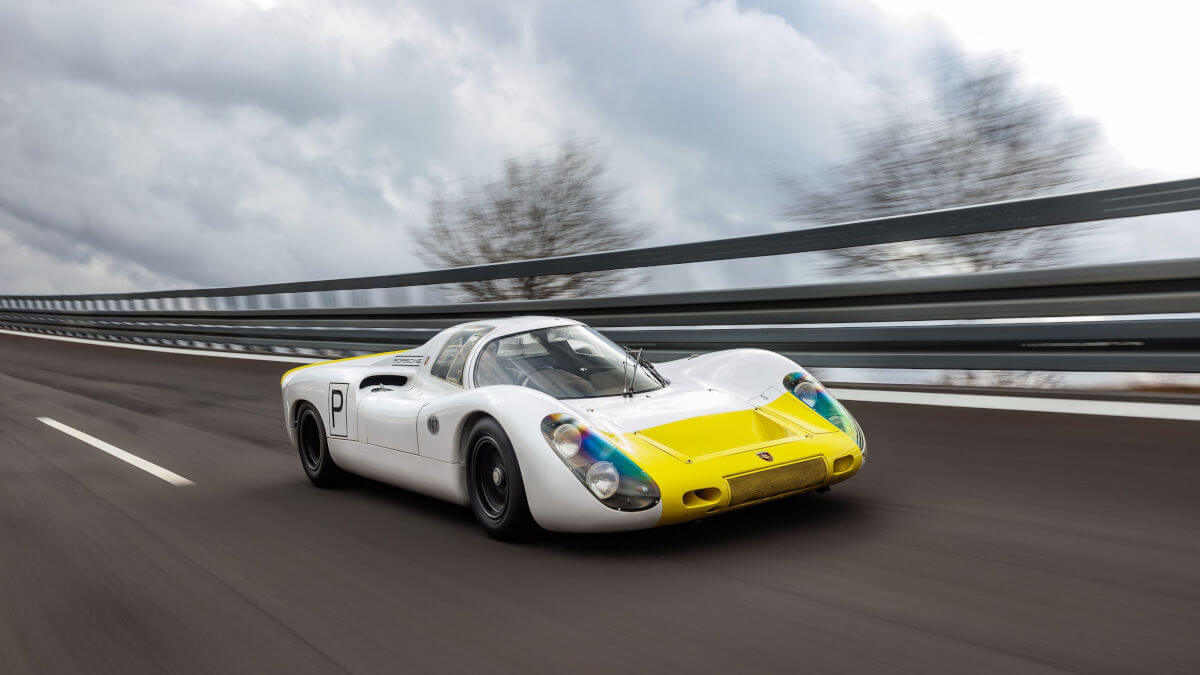



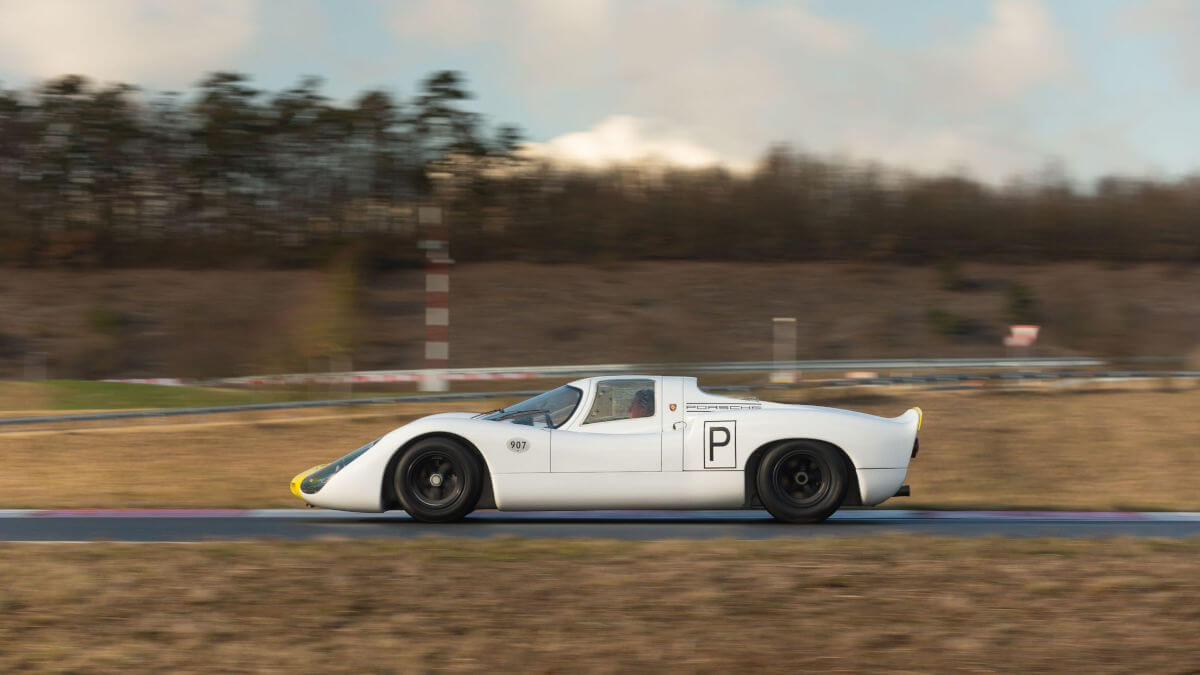





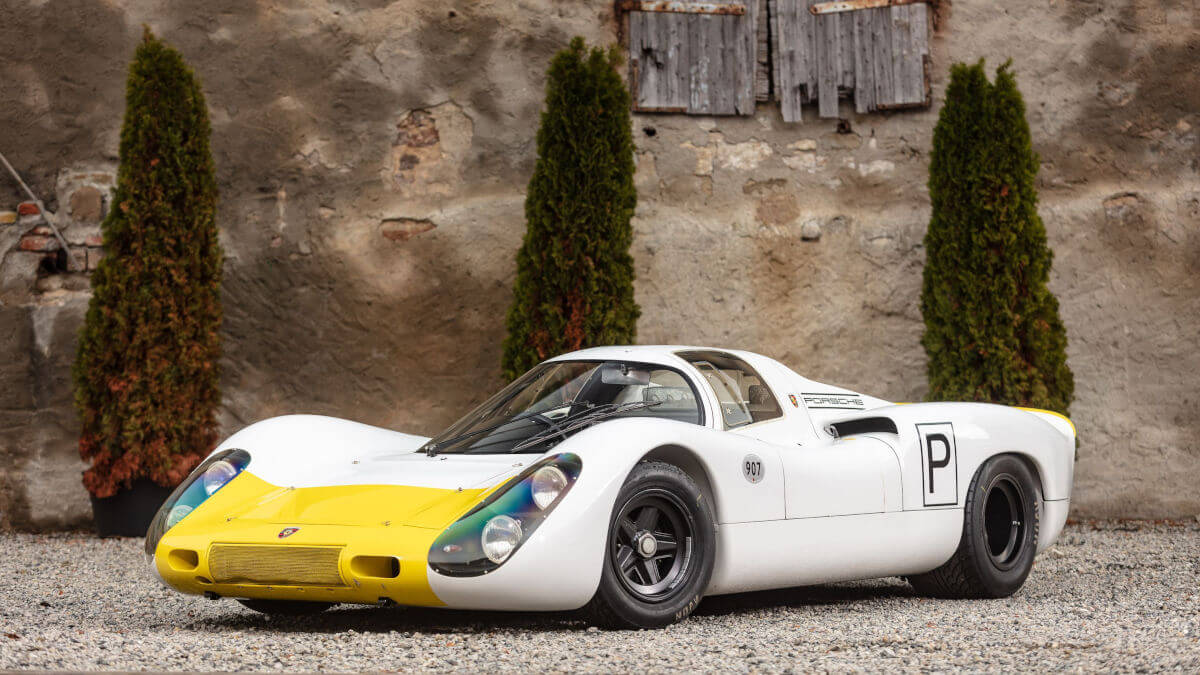

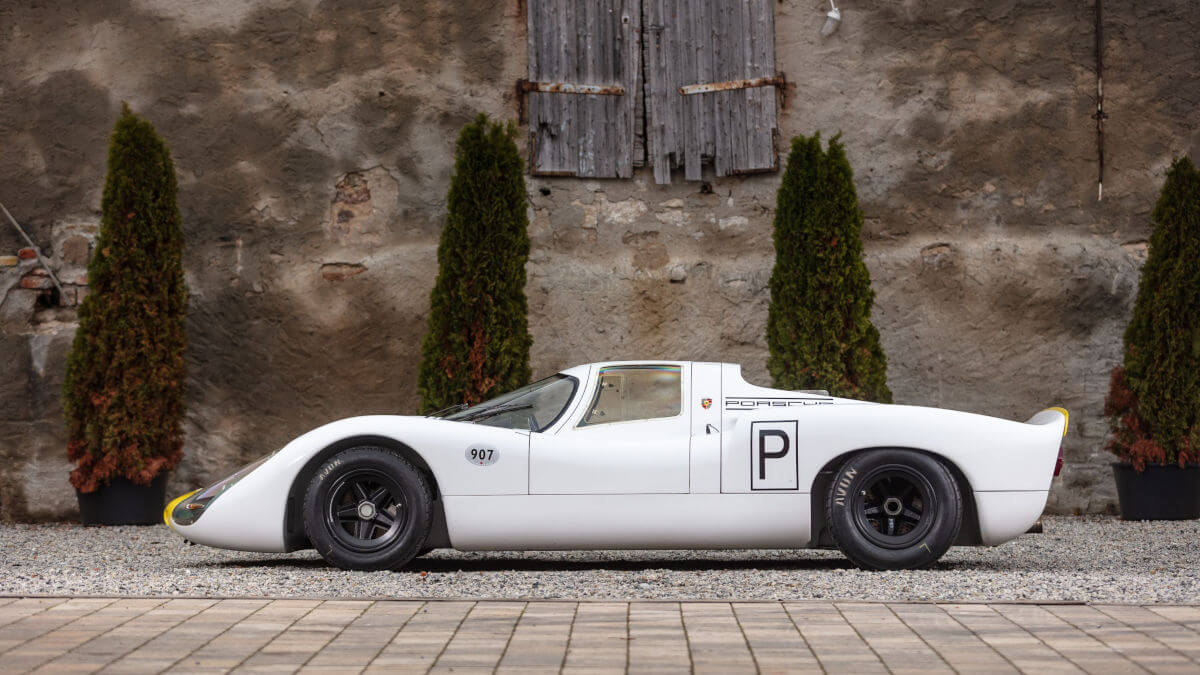

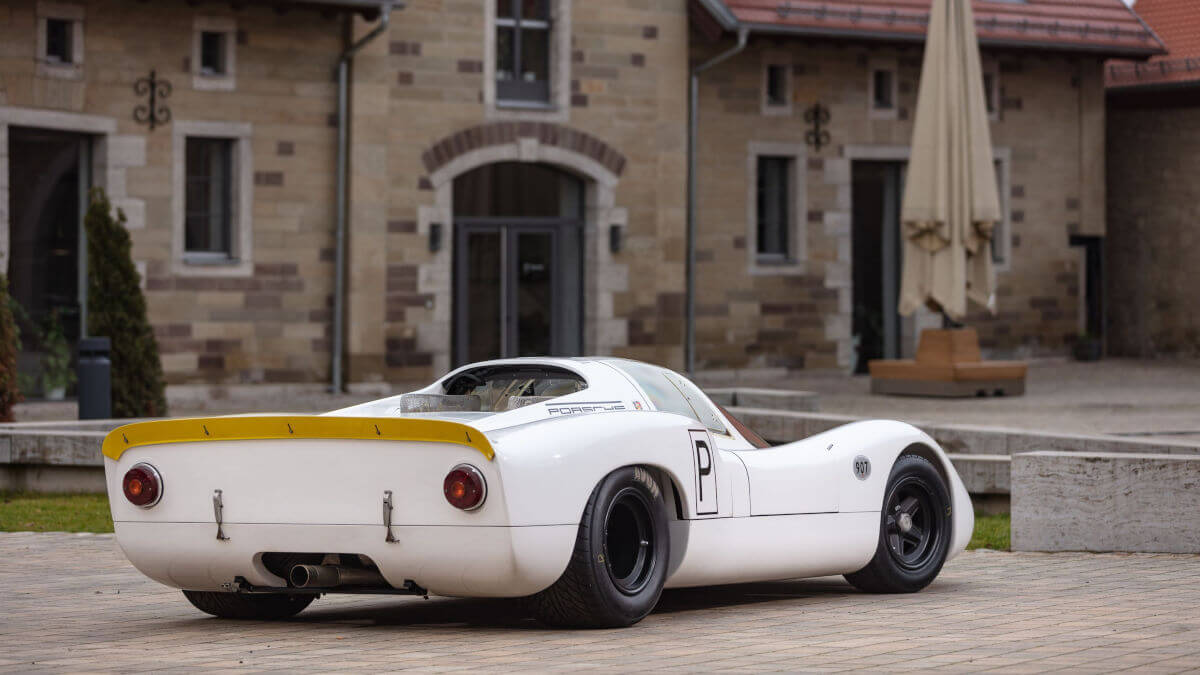



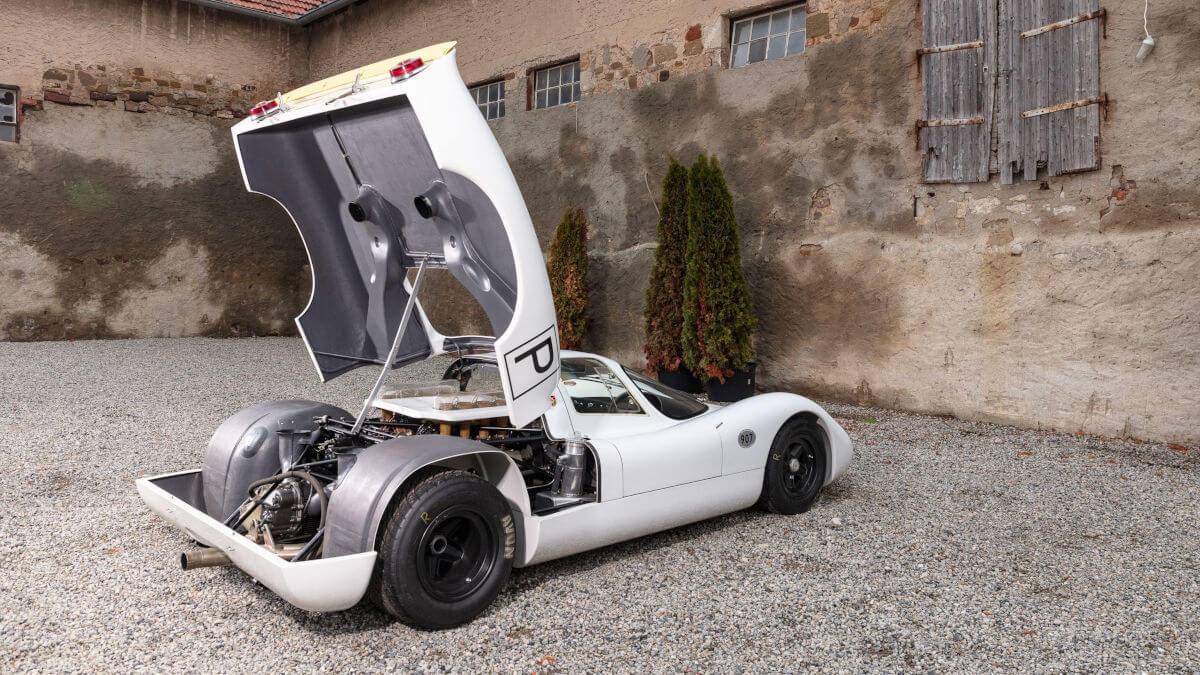

907-031 was a works racing car
With today’s racing cars, such a volume of events over a six-year period is unimaginable. In the second or third year, newer designs would be so far superior that you would only be racing for the back places. With Porsche’s plastic racing cars, however, this was different. Not only could private owners attack the factory cars, but they could also compete for many years. In fact, this Porsche 907 with chassis number 907-031 was part of the factory team in the 1000 kilometer race at the Nürburgring in 1968. At that time, competition was already raging between Porsche and Ford for the title in the World Sports Car Championship. Two 908s and two 907s competed against a pack of GT40s at the Nürburgring. In the end, Porsche kept the upper hand. One 908 and one 907 finished ahead of the best GT40. Fourth place went to 907-031, which had rolled into the pits during the race in limp mode with an almost empty tank.
907 put Porsche on the road to success
Porsche had introduced the 907 in 1967 as a further development and successor to the 910. This was a departure from the usual way of naming the cars after successive numbered development projects. Since the motorsport authority FIA had announced a cubic capacity limit of three liters in the prototype class and five liters in the sports car class for the 1968 season, Ford and Ferrari had to phase out their previous cars. At Porsche, a three-liter eight-cylinder racing engine was already in development but not yet ready. Therefore, aerodynamic fine-tuning ensured that victories could be celebrated with the existing 2.0 and 2.2 liter racing engines. In the 1967 season, the 907 ran as a long tail (Langheck), which made it about half a meter longer than the 910. For the following year, there was the further developed car with a short tail (Kurzheck), aluminium lattice tube frame and better cockpit ventilation.


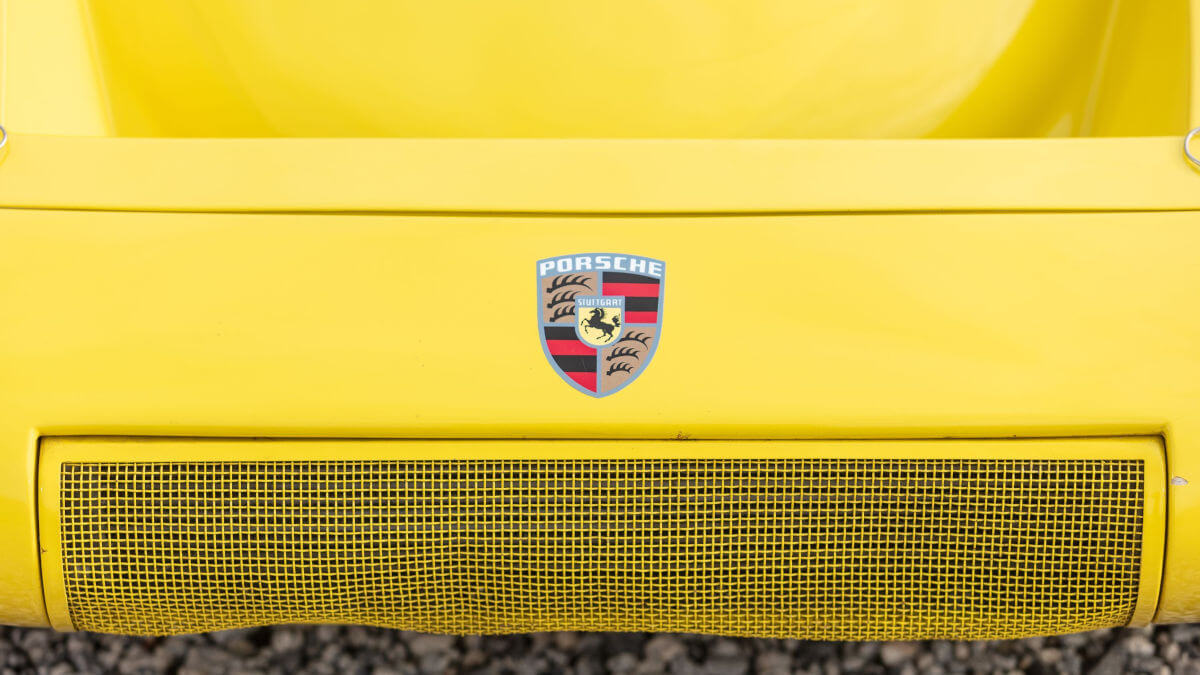





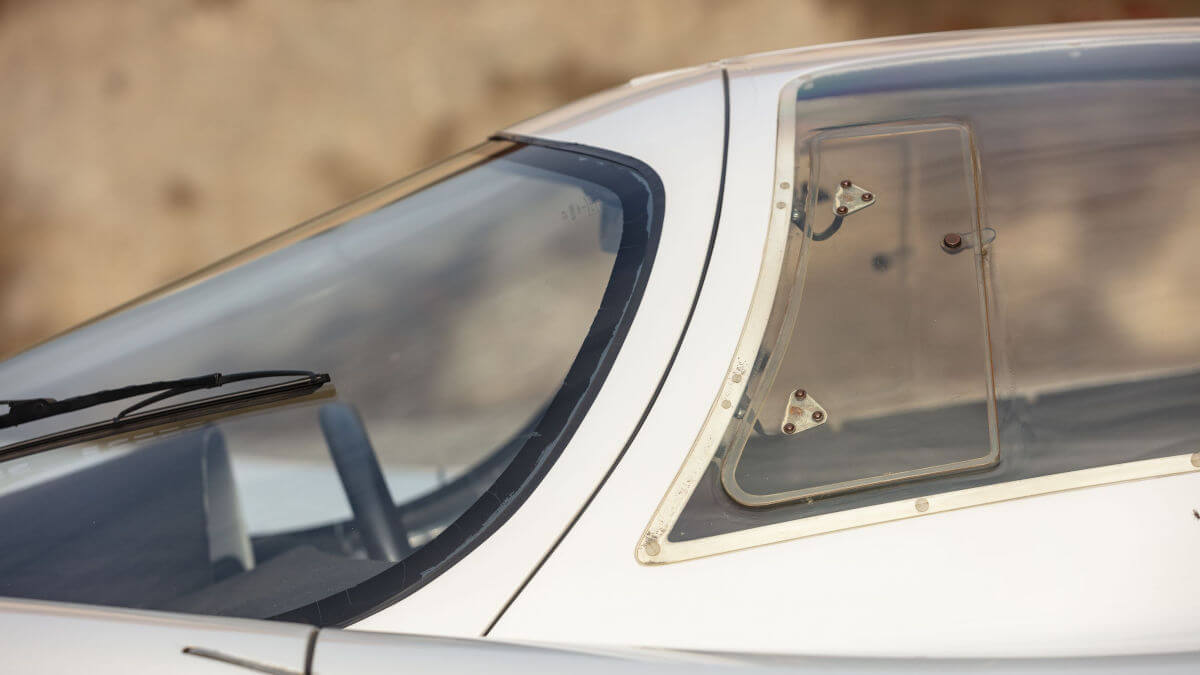

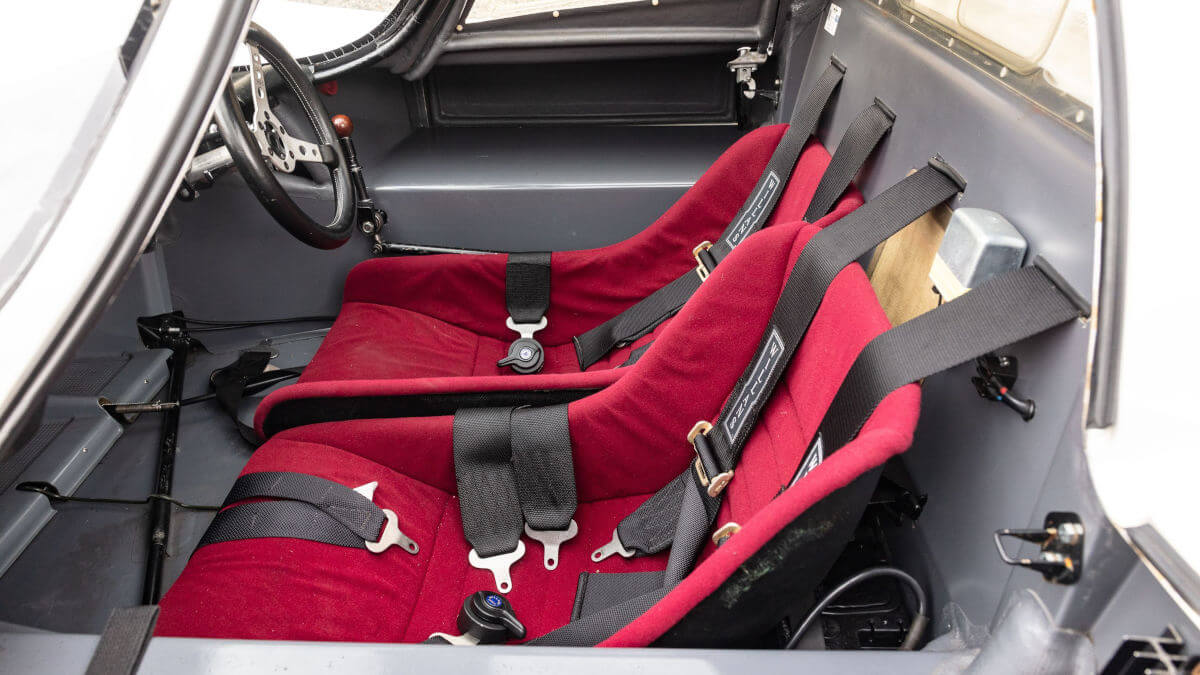

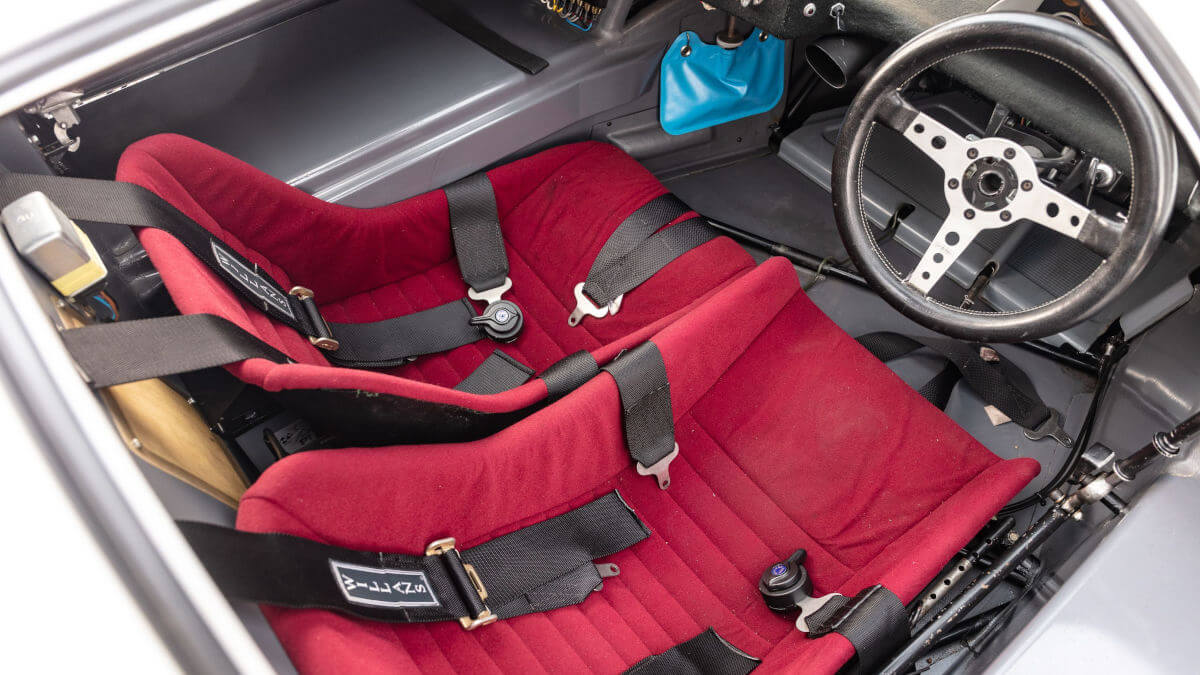

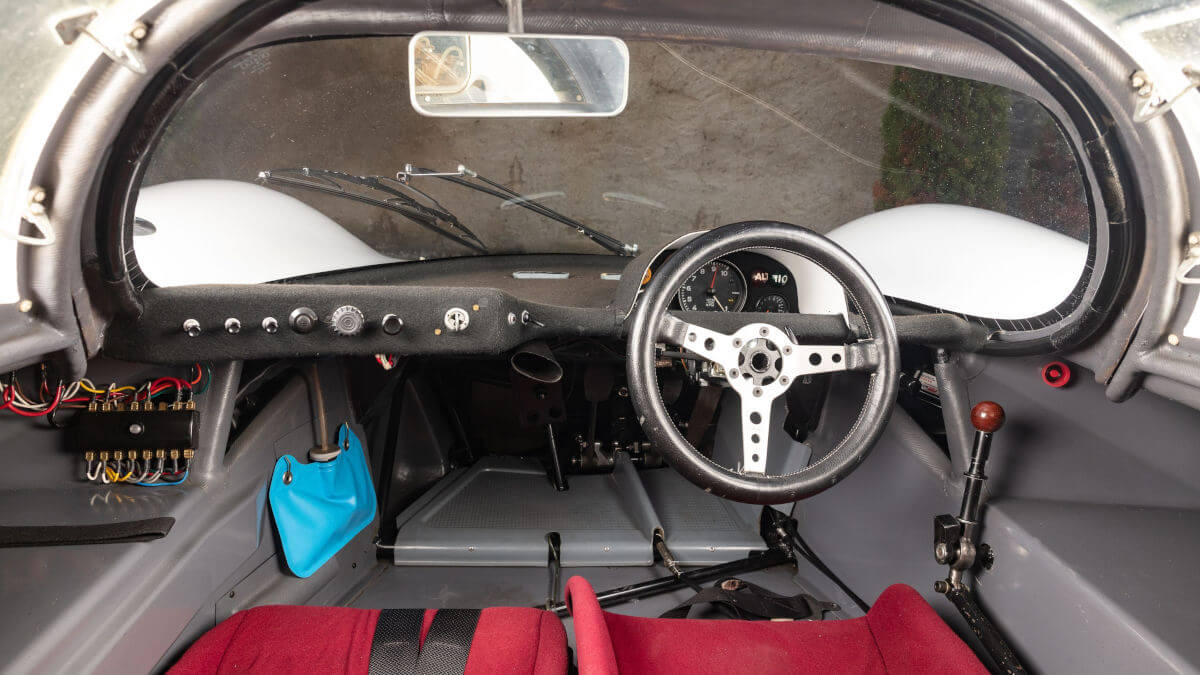







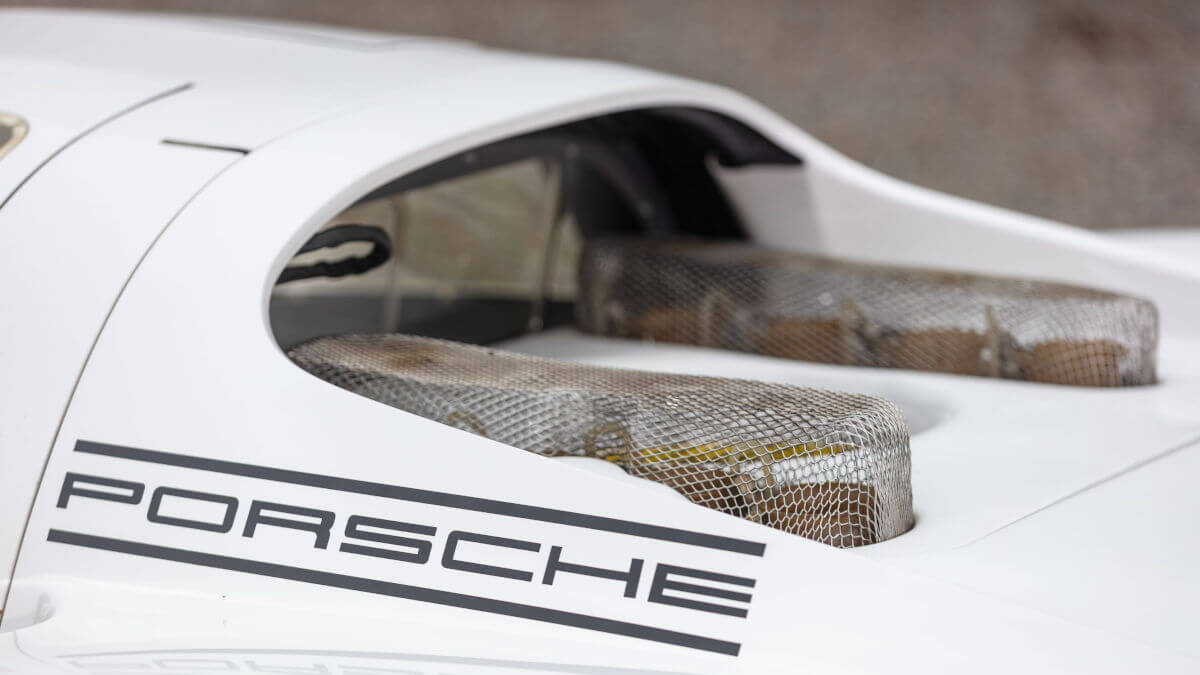

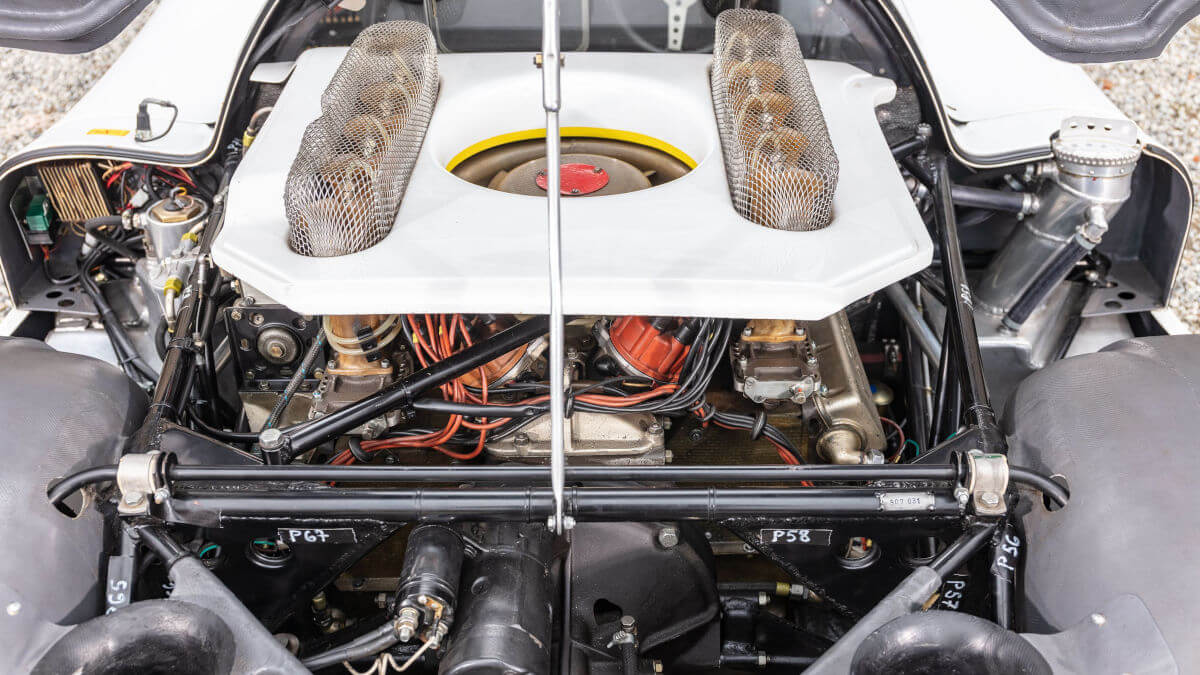





Second life with private teams
In fact, the 1000 kilometer race at the Nürburgring marked the turning point for the Porsche 907. For the first time, the new 908 was on the grid and established itself by winning the overall race. Afterwards, the works team only used the 907 in Spa-Francorchamps and all works racing cars of this type were then sold. Thus 907-031 came into the possession of Alejandro Soler-Roig in Barcelona on 10 January 1969. After several races, he sold the car in 1970 to the Wicky Racing Team of André Wicky from Switzerland. Until 1973, the 907 competed three times in the 24 Hours of Le Mans, among other events. At the end of the 1970s, the Wicky Racing Team sold some older racing cars. Thus 907-031 ended up in the collection of Albert Eggs, who restored the car. He then exhibited the racing car at a local show in Sierre (Canton Valais) in 1979. In 1983, Eggs offered the 907 in an advertisement in Auto Motor und Sport.
Third life in historic motorsport
Since then, the racing car has been part of the collection of Ernst Schuster, a German amateur racing driver. With a Porsche 936 C, he finished sixth in Le Mans in 1986. He used the 907 specifically in historic motorsport. For this purpose, he had the car extensively restored. The chassis and drivetrain went to Butch Dennison near Seattle. Meanwhile, Robert Hatchman in Oregon had the body parts made of glass fibre reinforced plastic overhauled. Valentin Schäffer and Gustav Nietsche took care of the eight-cylinder racing engine. All in all, this work lasted from 1991 to 1995. Since then, the 907 has competed in the Tour Auto and the Le Mans Classic, among other events. Porsche built a total of only 21 examples of the 907. 907-031 was the penultimate car in this series to be hand-built. The car offered by Artcurial is estimated at a hammer price between € 4,000,000 and € 6,000,000.
Images: Artcurial, Peter Singhof



